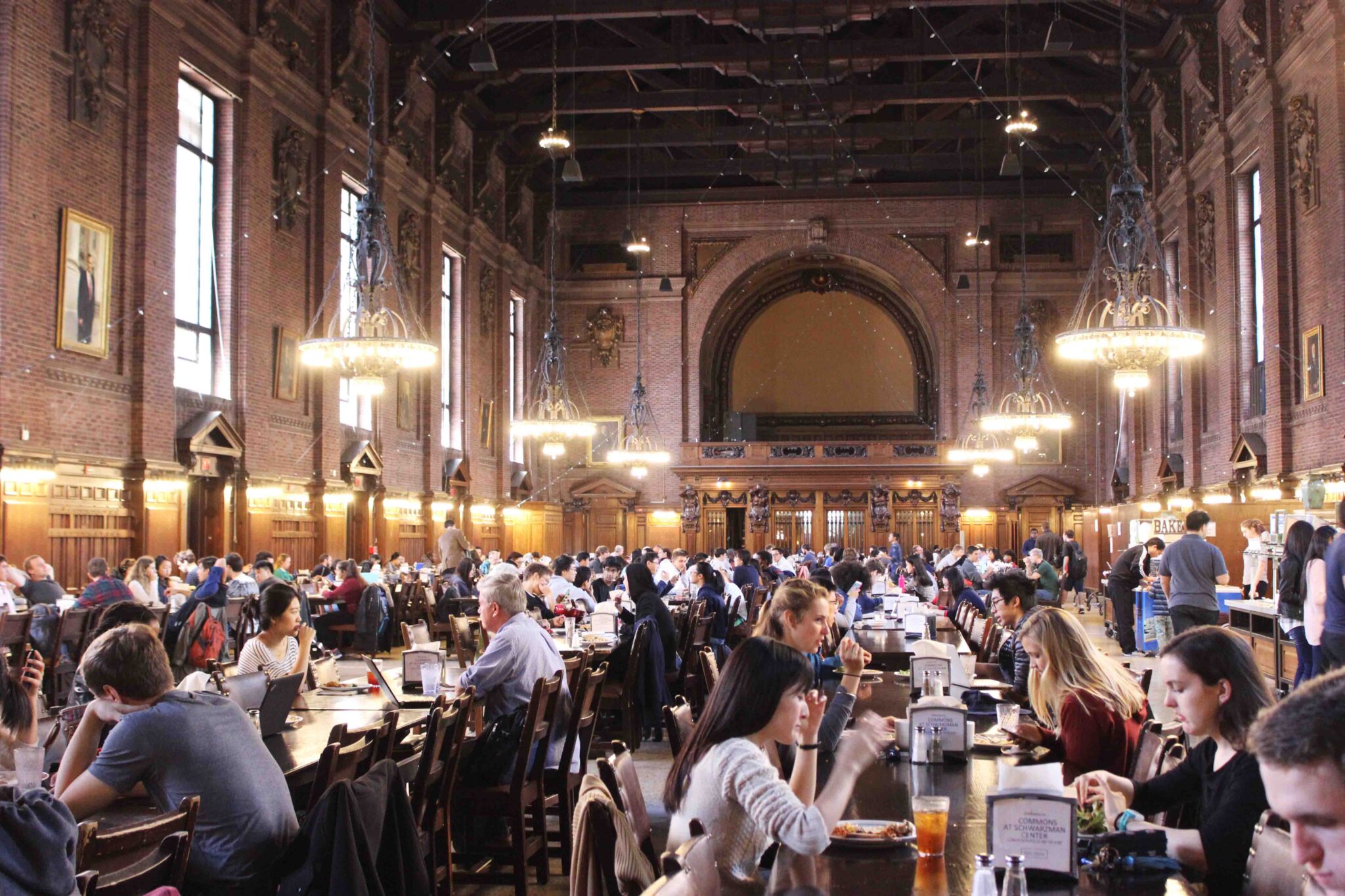
As administrators prepare for the closure of Commons at the Schwarzman Center, students are concerned about overcrowding in neighboring dining halls.
In an email to the News, Senior Director of Yale Dining Adam Millman said a number of projects are underway to mitigate the impact of Common’s closing across the dining portfolio. Millman said that the University is looking to increase the service capacity in the most popular lunch destinations on campus, which may include extended service hours. Yale Dining is also looking to provide information to students regarding underutilized dining locations during peak lunch times, he added.
“It goes without saying that we have more than enough service capacity in the overall residential dining system,” Millman said. “We serve our students on the meal plan every night without the support of Commons.”
Unlike other dining halls, which end lunch service at 1:30 p.m., Commons serves students until 3 p.m. on weekdays.
Yale College Dean Jonathan Holloway told the News that the “first step of mitigation” is the opening up of Pauli Murray and Benjamin Franklin colleges this fall. According to Holloway, the closure of Commons was timed to coincide with the opening of the Prospect Street facilities.
“The fact is that Commons couldn’t close until Murray and Franklin opened,” Holloway said. “Those two colleges will absorb hundreds of people who would be displaced.”
Holloway added that although administrators expect Murray and Benjamin Franklin to be popular lunchtime spots — people who venture to Science Hill will be able to stay on Prospect Street in between classes — they do not know at this point how much of the Commons lunch crowd the new colleges will absorb.
Following a $150 million donation from Blackstone CEO Stephen Schwarzman ’69, construction will begin this summer to transform Commons into a cultural programming and student life center named after the donor.
Many students interviewed expected the dining halls in residential colleges near Cross Campus, such as Silliman, Berkeley and Hopper, to become significantly more popular after Commons closes.
Nate Romero ’17 noted that lunch spots that often reach full capacity like Berkeley will likely receive even more traffic, while Henry Li ’17 said Silliman and Berkeley already experience overcrowding on days when Commons is closed.
Kamsi Nwangwu ’19 and Angela Lin ’20 both said that instituting policies limiting the number of students who eat in neighboring colleges could help address overcrowding. They cited existing policies in Morse, Stiles and Silliman that limit dining service to students affiliated with those colleges during peak hours.
However, Nwangwu added that these policies could disadvantage students who live in colleges farther away.
Claire Grundig ’20 said the closure of Commons will force STEM majors, who frequent the dining hall for its location at the base of Science Hill, to find different eateries. Grundig, a molecular, cellular and developmental biology major who estimated she eats lunch in Commons three times a week, said she will likely switch to the new colleges’ dining halls given their convenient location.
But other students, such as Carly Israel ’20, said they preferred Durfee’s Sweet Shoppe as a faster alternative to dining halls. Israel, a member of the Yale gymnastics team, said she found it much easier to grab a snack at Durfee’s before practice rather than stop for a full meal at a dining hall. And Masaru Urano, a visiting international student who eats at Commons every day, expects to go to Durfee’s next year since his schedule will likely not coincide with current residential college lunch hours.
Yale Commons was built in 1901 for the University’s bicentennial celebration.







